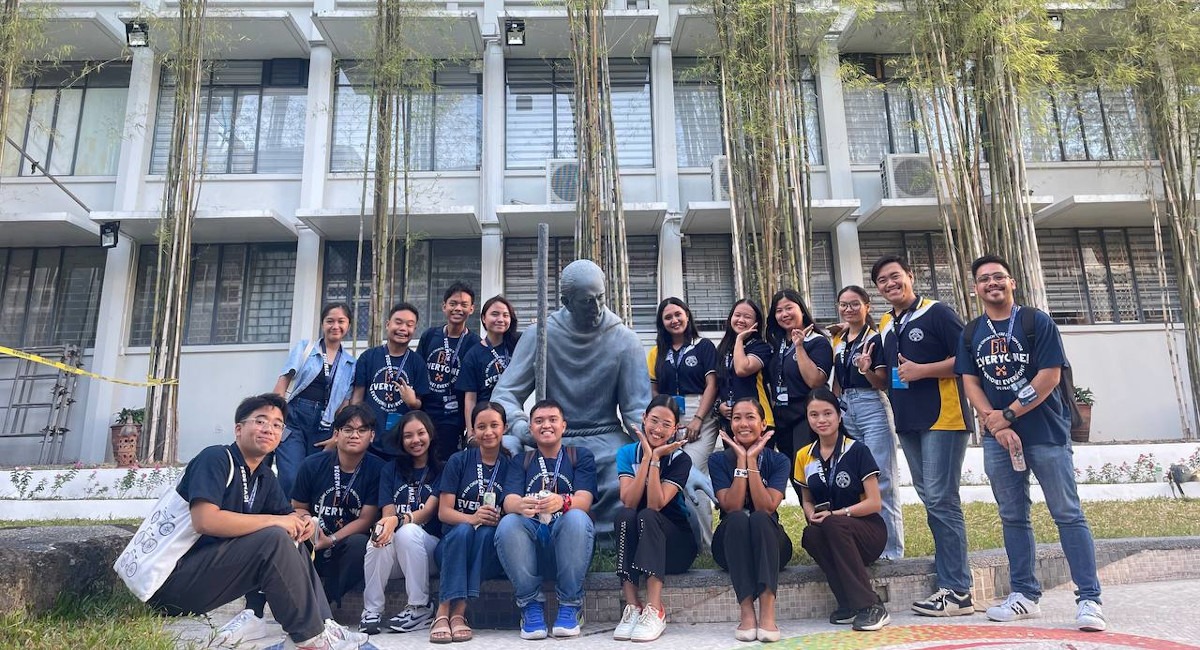 Along with love, faith, and God, hope is one of the first few abstract ideas introduced to us when we were young. At first, I thought I knew what hope meant. I described it as the longing for something better and, in the worst of times, just something good. The Oxford Dictionary phrases it similarly: “Hope is a feeling of expectation and desire for a certain thing to happen”.
Along with love, faith, and God, hope is one of the first few abstract ideas introduced to us when we were young. At first, I thought I knew what hope meant. I described it as the longing for something better and, in the worst of times, just something good. The Oxford Dictionary phrases it similarly: “Hope is a feeling of expectation and desire for a certain thing to happen”.
Hope is a desire, a feeling, and something within us.
Yet, living in a world where war, pandemic, death, and destruction have become the bore in the news, “hope” is beginning to feel more and more imaginative than the rational functions we were solving in math class.
That changed, however, after my encounter with the very thing itself during the International Conference on Youth Ministry at the Ateneo de Manila University this April. For three days, I conversed with Hope, nodding in agreement, smiling for courtesy’s sake, making silly punchlines, sometimes snorting at it, but, best of all, embracing it.
Emily Dickinson described hope in one of her poems. She said, “‘Hope’ is the thing with feathers.” She made an abstract idea even harder by correlating it with another seemingly unrelated concept—a bird, in the literal and figurative sense. But she continued, “That perches in the soul, and sings the tune without the words, and never stops at all.” For Dickinson, hope is not just an abstract emotion but a bird singing, perching in our souls. What a beautiful image, indeed, because I can see it clearly: a delicate songbird perched within me, singing endlessly, maybe muted, but singing all the same.
Pope Francis describes hope somewhat differently. In his homily on 29 October 2013, he spoke about hope by explaining what it is not. Hope is not optimism, a positive attitude, or even an anchor to our soul because that, too, may be attached to the wrong shore. A fitting image of hope is from St Paul, who likens it to the pangs of childbirth because hoping is a kind of groaning inwardly, a long waiting for God’s revelation. “A kind of labour,” as Pope Francis put it, pointing to Mary as the great icon of hope.
I saw Mary in the faces I met at the conference. I saw sisters and brothers going in haste to greet us, learn from one another, and become miracle workers of God. I saw her tears in the eyes of my friends who opened up in our Magis circle, a spiritual conversation where we shared the fruits of our learnings and realisations for each day. I felt her embrace in the grass and the wind during contemplation, where words failed to describe what was building inside me: a desire, a tune, or a nest full of that thing with feathers.
 Pope Francis explains that hope “changes within us, it changes our attitudes.” When a woman is pregnant, she is a woman, and yet this yearning for something great, this inward groaning that is waiting, this bird singing tunelessly in her soul, changes her because now she becomes a mother. She is no less a woman, yet she becomes more as a mother.
Pope Francis explains that hope “changes within us, it changes our attitudes.” When a woman is pregnant, she is a woman, and yet this yearning for something great, this inward groaning that is waiting, this bird singing tunelessly in her soul, changes her because now she becomes a mother. She is no less a woman, yet she becomes more as a mother.
Hope is a transformative force. As I was sitting there beside the Gesu, I wondered how I could contain this much hope within me.
The encounters I had with the people who were all filled with hope, speaking in different tongues but singing the same tune, endlessly transformed me from a hopeful person to a person of hope. In our generation, hopelessness has become a world crisis. But rather than succumbing to the same fate, God calls me to plant seedlings of hope. I was infected by the people I met there. Their hope was too palpable to ignore.
Indeed, hope is contagious. Like that laughter we shared the first time we climbed that language barrier and the last time, as we parted ways, bringing with us our own hope and wanting to share it in our communities.
Hope is a renewing force. Christ, as the greatest hope of all, continues to renew us in all our shortcomings and grievances. I saw hope jumping from branch to branch as the presider, along with the tens or more concelebrants, raised the Body and Blood of Christ, singing songs that moved hearts into tears.
Hope is that thing with fingers that shook hands and slapped high fives, who moulded the bread and food we ate, who signed in a language so that others may understand, who embraced backs in sorrow and joy, who continued to speak despite the hoarseness of their voices, and who worked tirelessly to serve and love others.
As I left the venue for the last time, I had a better grasp of what hope is and what it could be. Hope is that thing with fingers, and ever since, I have continued to ask God for the grace that I may be a person of hope who may go out in haste to serve and love others, knowing that within me is a bird that sings endlessly, that I am also a “thing” with fingers.
 Ethan Nigel Portes is a STEM student at Ateneo de Naga University Senior High School in Naga City, Philippines. He is the president of the school’s Youth Christian Life Community.
Ethan Nigel Portes is a STEM student at Ateneo de Naga University Senior High School in Naga City, Philippines. He is the president of the school’s Youth Christian Life Community.

